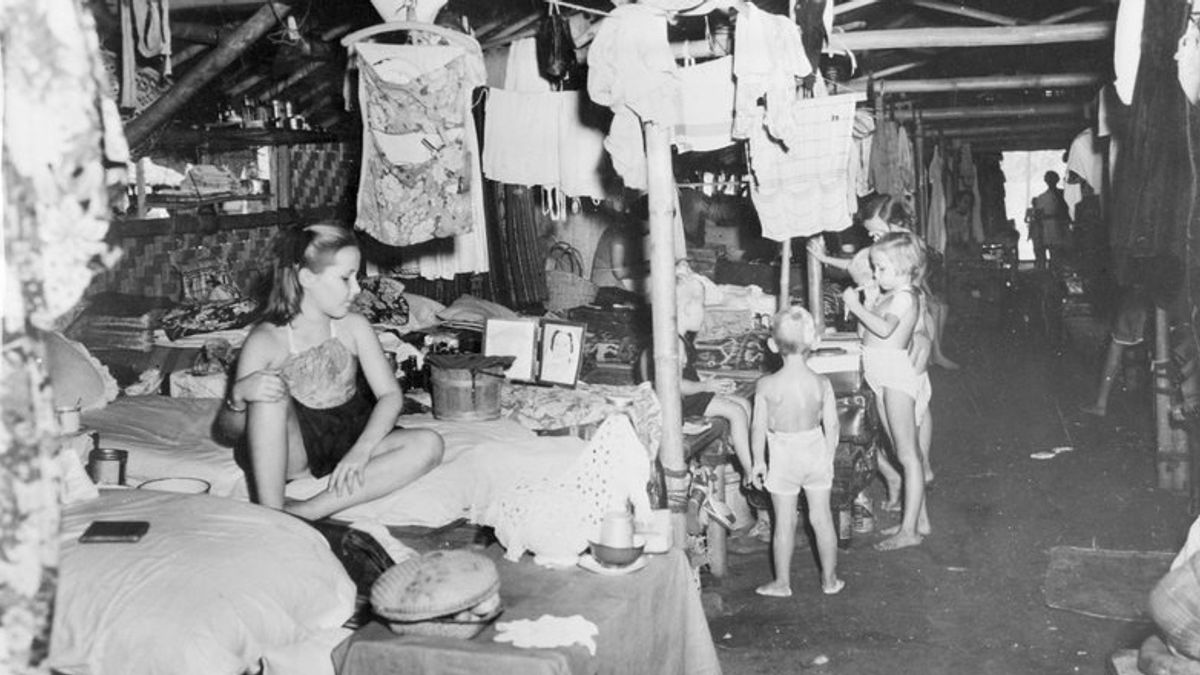JAKARTA History today, 81 years ago, March 25, 1942, the Japanese colonialists turned the Glodok Prison in Jakarta into an interniring camp. Those who carried them there were Europeans. The camp was deliberately presented to attract sympathy from all natives.
Previously, the natives had welcomed the presence of the Japanese colonialists with great fanfare. Japanese colonizers then responded by making Europeans, especially the Dutch, live in the lowest class. They are treated like trash.
The Dutch occupation was considered a painful period in the history of the Indonesian nation. The Dutch treated the natives far from being humane. They considered the natives low. In fact, it was equalized to animals.
The narrative created a very deep hatred for the bumiputras. Resistance was also fought. Even though the Dutch were often able to push back. Instead of fear, the Dutch often underestimated. The natives were indecisive and didn't play. They also support anyone who dares to fight the Dutch. Japan, especially.
The presence of Japan is fully supported by the natives. They felt that the Japanese had high sympathy for Indonesia's independence. This assumption was stronger with the courage of the Japanese to repulse the Dutch in 1942.
They then began to impose all Europeans inhumanely. Everyone was arrested, tortured, and equalized like animals. The Japanese courage amazed the natives. Even though the Japanese colonialists were not much different from the Dutch colonialists.
The Dutch in general, the Indonesian people have changed in view of the Dutch. During the Japanese occupation, residents saw how the Dutch, who were considered 'tuan' and more'superior' or greater, turned out to be helpless. They did not provide meaningful resistance to the enemy, namely the Japanese army.
They were even seen running away from fear and then helpless in detention or internirism camps. Indonesians who were originally inferior to the Dutch 'Ndoro Tuan' then changed. It turns out that the Dutch are also the same as the natives who can be afraid and feel defeated and desperate," said JB Sudarmanto in the book Biography IJ Kasimo: Tremendous Politics (2011).
Japanese colonizers began to arrest many Europeans. Japan does not want them to live free. As a result, all Europeans who were arrested were gathered in several places. They call it an online camp.
The arrest agenda is even more massive. All kinds of buildings were then transformed into an intermediary camp. Glodok Prison, for example. The prison that Bung Hatta once lived in was used as a prisoner of war camp for Europeans on March 25, 1942.
While in Glodok prison (now Harco Shopping, Jakarta City), on March 25, 1942 it was used as the first prisoner of war camp for Europeans, except for German and Italian citizens, who were then allies of Japan in World War II..
The number of war pages imprisoned in Glodok is around 1,500 people, mainly consisting of British and Australian soldiers. Among them are a small number of Dutch citizens who work at Kemayoran Airport, "explained Alwi Shahab in the bookSaudagar Baghdad from Betawi (2004).
The English, Chinese, Japanese, Arabic, and French versions are automatically generated by the AI. So there may still be inaccuracies in translating, please always see Indonesian as our main language. (system supported by DigitalSiber.id)












